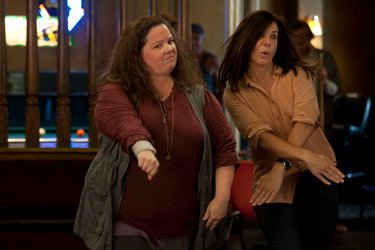
Consider Gender Inequality
Ellen Tejle was instrumental in co-developing the A-rating system, based on the Bechdel Test, which rates films according to gender equality.
Denne artikkelen har tidligere vært publisert i New York Times
Men in all leading positions
“Has gender equality gone too far in Sweden?”
This is the question I’ve faced over the last couple of weeks from the international media since helping to introduce a new film rating system that takes into account gender equality.

Gemma La Mana/20th Century Fox
In short: No. First of all, “too equal” is a mathematically impossible concept. But put that aside and look at the facts on the ground in female-friendly Scandinavia, where equal pay is still a basic struggle. In Sweden, a woman will earn $450,000 less than a man in her lifetime. Further, recognition of rights and equal political representation is still not in place, anywhere. And in the movie business the celluloid stories are mostly driven by leading men, while being created and perpetuated by male writers, directors and producers.
The A-rating system
Four Swedish independent cinemas decided to have a go at gender inequality. We introduced the “A-rating” a month ago. It’s a method for highlighting films in our repertoire that pass the Bechdel Test, which basically means that a film must feature two women (with names) discussing a topic other than a man. The “A-rating” assures this. To us, it’s a case of positive consumer information.
Behold the common outrage: “Stop trying to influence culture and weigh it down with responsibilities!”
Our response is clear: Gender inequality is obviously a problem and the film industry indeed holds a responsibility. Film influences people, and therefore a conservative film industry will hamper progress.
Basic representation – where are the women?
It’s way too easy finding data showing inequalities in film. In family films released between 2006 and 2009, 70 percent of the speaking roles were given to men. It was the same figure in 1946. On top of that, the number of women directing in Hollywood is dropping. In 2011, 5 percent of directors were women, down from 7 percent one year earlier. Also, how many female superheroes have you seen on the screen lately?

The A-rating is in no way the only solution to these challenges. But it lays bare the most fundamental problem – basic representation. The A-rating shouldn’t be seen as a mark of quality or feminist culture. Films with excellent female characters will fail the Bechdel Test and sexist rubbish will pass the test. This is about quantitative aspects, not qualitative. The A-rating is a method for illustrating gender norms and structures.
Film must be something bigger and better than the story of men by men. Let’s continue this discussion, take responsibility together and reach for change.
Les mer om A-rate her